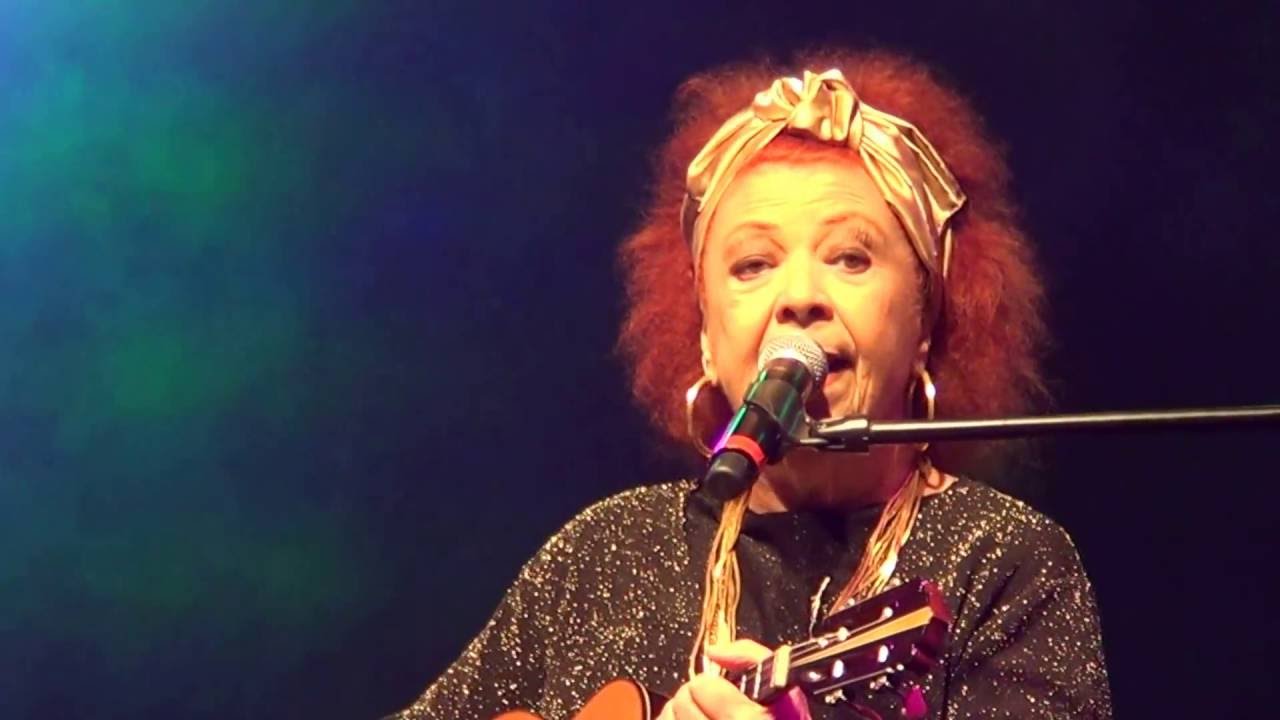Beth Carvalho was raised in the South Side, a middle-class suburb of Gamboa. She was seven years old when she began performing in novice shows at several Carioca radios like the Nacional. She also studied music theory at the Escola Nacional De Musica. She began to take her first steps in music when the bossa Nova movement gained informal venues such as schools and universities. For example, her first recording was “Por Quem Morrer De Amor” by Roberto Menescal/Ronaldo Boscoli. Another bossa nova was performed by Tiberio gaspar, composer/musician at the time. She also sang with Eduardo Conde in Conjunto 3-D (Antonio Adolfo on piano, Chico Batera on drums, Luis, bass), and with Conjunto 3-D (Antonio Adolfo on piano, Chico Batera on drums, Luis, and bass). She also showed her love for the samba of hills, participating in the show A Hora E A Vez Do Samba together with Ze Keti/Os Cinco Crioulos. Her interpretation of “Andanca”, (Danilo Cacymmi/Edmundo Suto/Paulinho Tapajos), won third place at the III Festival Internacional da Cancao in 1968. This success led to Andanca, her first LP. It featured the song that would become a legend in MPB. 1971 was the turning point for her when she recorded “Rio Grande Do Sul Na Festa Do Preto Forro”, a samba-enredo, for Unidos de Sao Carlos. She began to perform sambas and strengthened her ties with hill culture. “So Quero Ver” was recorded by Edmundo Suto/Paulinho Tapajos. It was a huge hit. Carvalho was excited to see it performed in Salgueiro’s rodas samba and Mangueira’s. She decided that she would continue the direct approach of making music for the hill communities. She began her career as a samba performer when she joined Tapecar, where she recorded “Amor, Amor” and “Folhas Secas” with Nelson Cavaquinho, Luizao, Marcal, Luna, Eliseu, Martinho da Villa, and other samba legends like Geraldo Vespar, Luizao, Marcal, Luna, Eliseu, Martinho da Silva, and Nosso Samba. The 1974 LP Pra Seu Governo featured Nelson Cavaquinho singing and playing the violao. It also had a hit song, “1800 Colinas”, (Gracia do Saltgueiro). It was also released in France and Brazil, where it had a great performance. It was the first album to open doors for a season at a Parisian nightclub. Nos Botequins Da Vida (1977), sold 400,000 copies, with the hits “Saco de Feijao (Francisco Santana), and “Olho Por Olho” (Ze do Maranhao/Daniel Santos). Carvalho was already a sambista in the late 1970s and supported many young composers. She presented Jorge Aragao, who played the violao on her 1978 LP De Pe No Chao. This interpretation became a huge hit. The Cacique de Ramos was the first to participate in the percussion, opening a lasting association. Beth Carvalho No Pagode (1979), a classic, had the biggest hit of her career, “Coisinha Do Pai”. (Jorge Aragao/Almir Guineto/Luiz Carl). The song was included in the Space Probe Pathfinder in the late ’90s. Other hits included “Pedi Ao Ceu”, which was Almir Guineto/Luverci Ertiolo, and “Tem Nada Nao,” which was Almir Guineto/Luverci Jaroge Aragao. Unidos do Cabucu paid tribute to Beth Carvalho by dedicating the samba-enredo “Beth Carvalho a Enamorada do Samba” (1984) in her honor. She was also a composer and wrote with “Cancao de Esperar Nenem”, which is included in Sentimento Brasileiro (1980). She recorded the 1987 LP Beth Carvalho No Festival De Montreux live at the Montreux Festival (Switzerland). She would also record another live album in the early 1990s, this time at Paris’ Olympia (France), Ao Vivo no Olympia. Carvalho also had a big hit on the radio in 1999 with “Samba De Arere” (“Xande De Pilares/Arlindo Cru/Mauro Jr.), taken from the live CD Pagode De Mesa. Allmsuic
